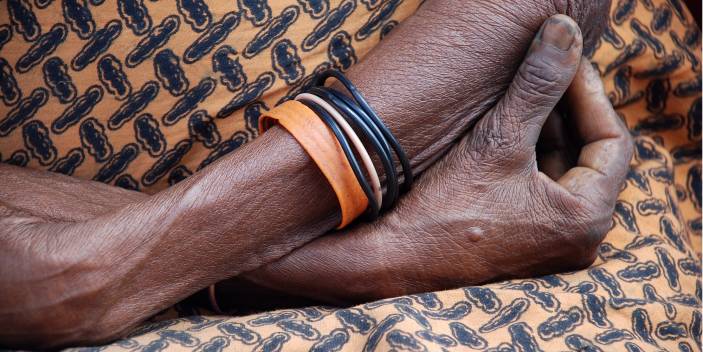
“When the enemy attacked I couldn’t run away because my legs don’t work. My neighbours hid me under trees. I stayed there for four days.” – Rosa (not her real name), 80 years old
When she heard the attack coming, Rosa was not thinking about the mandates of aid agencies. As her neighbours helped her to a hiding place, her concern was not what was in the humanitarian community’s Strategic Response Plan to address the impact of conflict on civilians. And when she finally emerged from beneath the trees after four days of what one can only imagine must have been utter terror, her first thought was almost certainly not “I wonder which of the 11 humanitarian clusters, or sectoral coordination groups, is responsible for meeting my needs”.
So when Oxfam recently developed a set of materials on protection in humanitarian action for the Global Protection Cluster, we tried to focus less on the systems and structures involved and more on what protection might mean for the people directly affected. People who, like Rosa, may be at risk of violence, coercion or abuse from others.
Straight talking on protection
The communication materials – a video, two short booklets and two leaflets that fold out into posters – were commissioned by the Global Protection Cluster, with ECHO funding. The remit was to convey in clear, concise and accessible terms what protection means in a humanitarian response, and what action people at risk are entitled to expect of humanitarians to help keep them safe from such threats.
This was necessary because protection remains a bit of a mystery to many in the humanitarian field, and the language used to talk about it is often a large part of the problem.
“Colleagues’ eyes glaze over if we start by talking about human rights and the Geneva Conventions,” protection specialists told us.
Vital though rights and the law are, we had first to help humanitarians in other sectors see how protection is directly relevant to their own work. That meant minimising the use of jargon and abstract concepts, and focusing on the practical.
Five new resources
So for instance the booklet Protection: what is it anyway? clarifies that humanitarians do not physically protect people from danger, but we can help them stay safe from violence, coercion and abuse. This is both an individual and a collective responsibility for organisations in all fields of humanitarian action. The booklet looks at who is at risk, who is responsible for protecting them, and what they can expect of us as humanitarians. It also gives an overview of specialist protection organisations and areas of intervention, and provides links to more detailed resources.
A video entitled The Centrality of protection: what it means in practice illustrates how that responsibility translates into practical action for organisations in all sectors.
Meanwhile a leaflet, Protection – you’re already part of it, tackles some of the common concerns non-specialists voice about attempting to incorporate protection in their emergency response efforts.
Another leaflet, Working together for protection, which has a poster on the reverse, highlights the respective responsibilities of a range of bodies , including local and national government services, armed groups, local civil society organisations, and humanitarian and development agencies. Protection specialists may also be interested in the case studies provided in another booklet, Working with state authorities and armed groups on protection.
Putting people at the centre
Amidst the clamorous demands of the humanitarian system, testimonies like Rosa’s above can be a useful reminder of the needs and experience of the people directly affected by a crisis, and on what we as humanitarians can do to support their own action to stay safe.
The materials use photos and quotations to highlight the situation of older and disabled people alongside other sections of the community – continuing the efforts of HelpAge and others to keep them on the humanitarian ‘radar’.
Have we been successful? Check them out on the GPC or Oxfam website and see for yourself. All the materials can be downloaded and printed in English, French, Spanish and Arabic, and the GPC will hold the master files for updates and translation into other languages.
